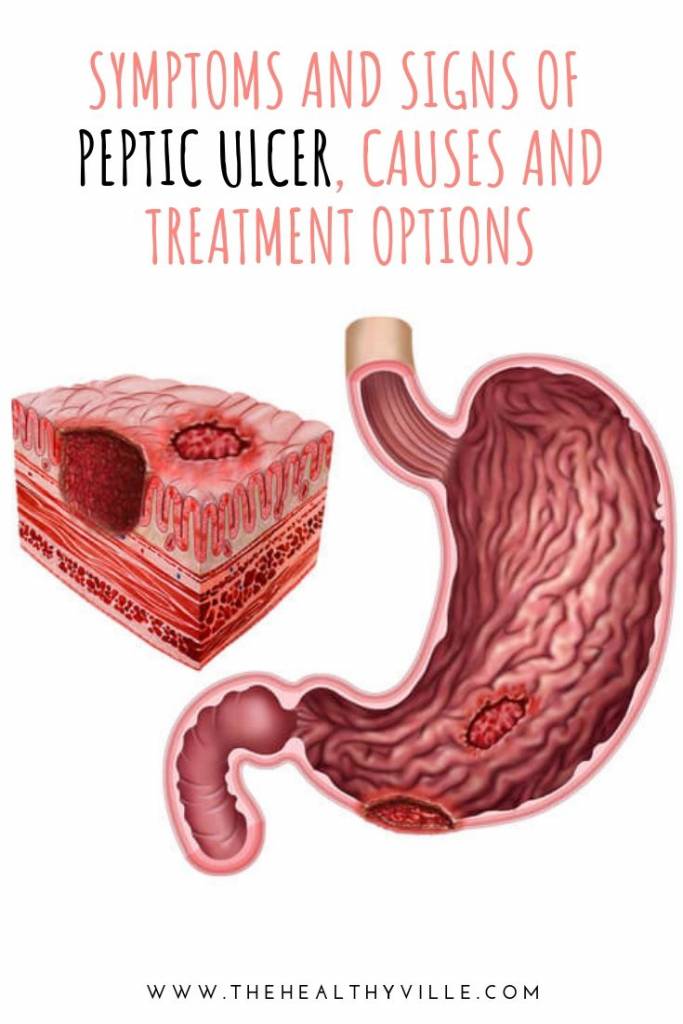The signs of peptic ulcer must be recognized in time, so that you get an adequate treatment. Learn them and report them to your doctor immediately!
The bacterium Helicobacter pylori is found in more than 90% of cases of peptic ulcer. Learn why and how, and make sure you prevent this from happening to you.
Peptic ulcer is a lesion with loss of substance from the gastroduodenal mucosa. Although the incidence of peptic ulcer disease is decreasing, it still affects a large part of the population.
Helicobacter pylori is found in more than 90% of cases of peptic ulcer. It is a type of bacteria that causes infections in the stomach.
The ulcer is found in approximately two thirds of the world’s population. It is possible that it is transmitted through contaminated water and food.
Causes of peptic ulcer
Most ulcers are produced by an imbalance between the aggressive and defensive agents of the gastroduodenal mucosa. This imbalance is secondary to infection by Helicobacter pylori or the consumption of non-steroidal anti-inflammatory drugs (NSAIDs).
In cases of peptic ulcer that present Helicobacter, eradication of the bacteria will reduce recurrence. However, only between 10 and 20% of people infected by Helicobacter pylori will develop at some point a peptic ulcer.
When there is a chronic use of NSAIDs, 50% of these people will present superficial gastric lesions. In addition, ulcers in these cases are usually asymptomatic.
The risk factors for peptic ulcer in people who consume NSAIDs are:
- History of peptic ulcer.
- Age, over 60 years.
- Use of anticoagulants or corticosteroids.
- High doses of NSAIDs.
- Helicobacter pylori infection.
Although smoking seems to negatively influence the healing of peptic ulcer, there are no studies that show that smoking, stress or diet are factors that trigger peptic ulcer.
Signs of peptic ulcer and diagnosis
The majority of people affected with ulcers present a dyspepsia symptomatology. The pattern of dyspepsia symptoms already guides the diagnosis of ulcer. Symptoms include epigastric pain on an empty stomach that subsides with food or antacids.
For the diagnosis, it is important to have information about the lifestyle, pharmacological treatments and personal history of ulcer or infection by Helicobacter pylori.
In some people, the ulcer can coexist with gastroesophageal reflux disease. This can make diagnosis difficult. However, the most sensitive and specific test to confirm the existence of ulcer is upper digestive endoscopy (gastroscopy).
Treatment
The objective of the treatment is the relief of the signs of peptic ulcer, the healing of the ulcer and the prevention of complications. In addition, you should follow hygienic-dietetic measures, such as:
- Avoid the use of NSAIDs.
- Do without food and drinks that cause the symptoms.
- Stop smoking, as tobacco delays the healing of the ulcer and increases recurrences.
- Antisecretory treatment
Currently proton pump inhibitors (PPIs) are the drugs that achieve higher rates of mucosal healing.
You should take them before meals. In addition, there are studies that show greater effectiveness if you take them in the morning than at the end of the day.
Proton pump inhibitor drugs require 3 to 5 days to reach the maximum effect. However, there is a variability in the clinical response due to the hepatic metabolism of the drug.
The duration of peptic ulcer treatment depends on the location of the peptic ulcer. In the duodenal ulcer it stays for 4 weeks, while in the gastric it is between 6 and 8 weeks.
Eradication of Helicobacter pylori
The eradication of the bacteria achieves healing of the ulcer. In addition, it diminishes the ulcerative complications in the long term.
The eradication treatment of first choice consists of administering a PPI and antibiotics (clarithromycin, amoxicillin and metronidazole) for at least ten days.
In patients allergic to penicillin, doctors prescribe IBP, clarithromycin and metronidazole as a first choice for at least 10 days.
Recommendations for the use of NSAIDs
When there are risk factors for peptic ulcer, before taking NSAIDs it is advisable to take into account the following recommendations:
Check the indication: if the effect we are looking for is analgesia or reduce fever, it is appropriate to take acetaminophen.
Always use the minimum effective dose of NSAIDs and, in addition, the least toxic dose.
Avoid taking joint NSAIDs, anticoagulants and corticosteroids.
Don’t forget to SHARE the signs of peptic ulcer with your friends and family on your social networks!

